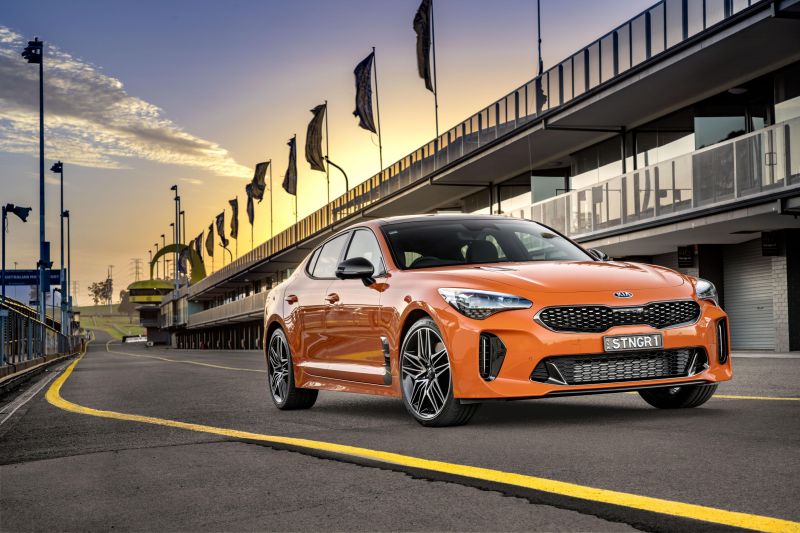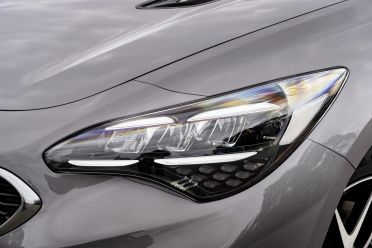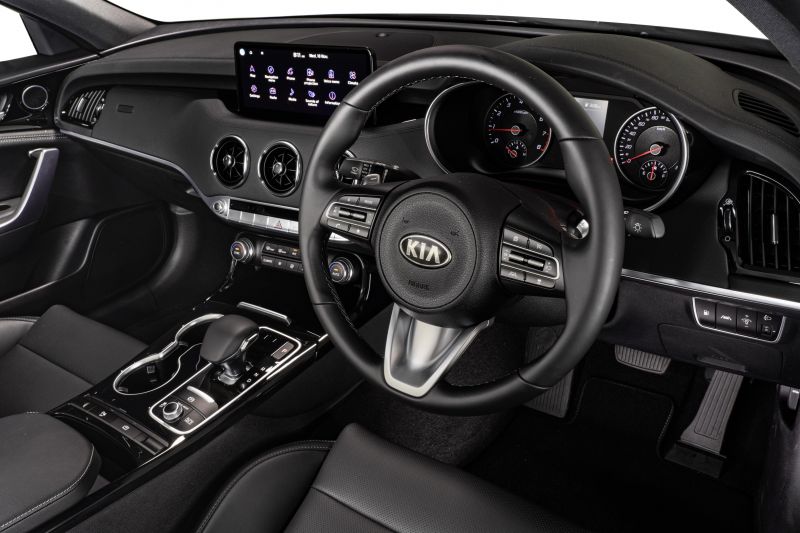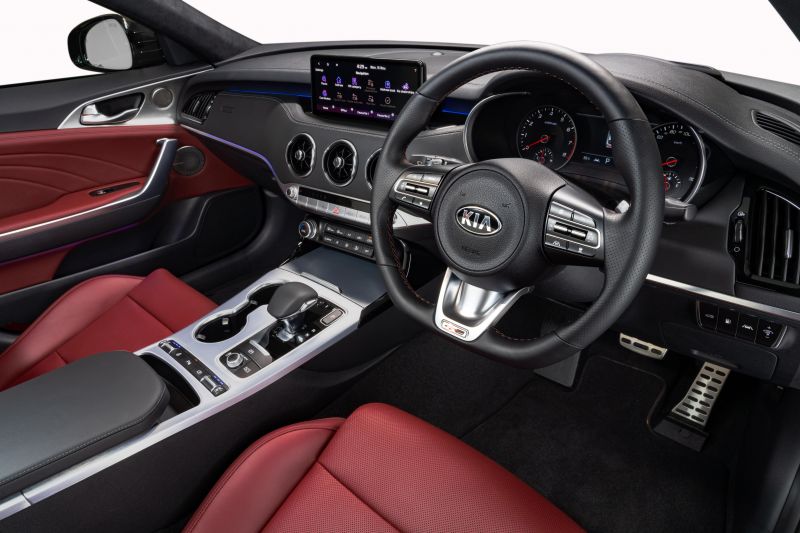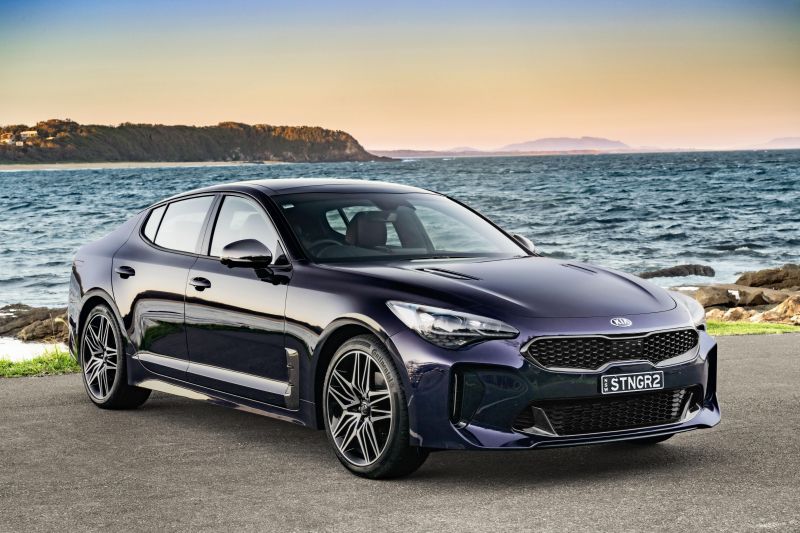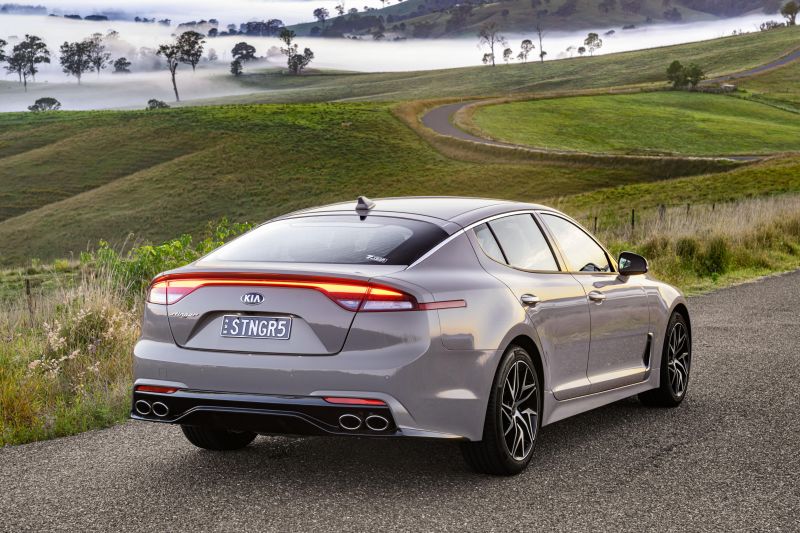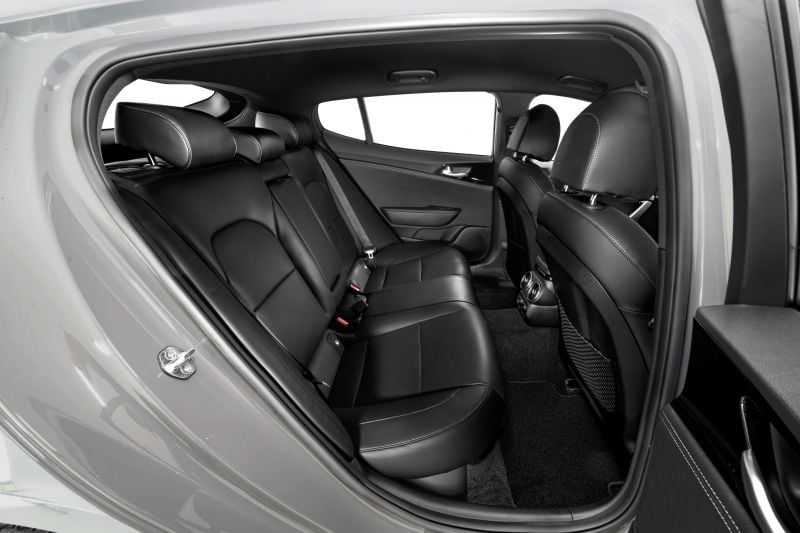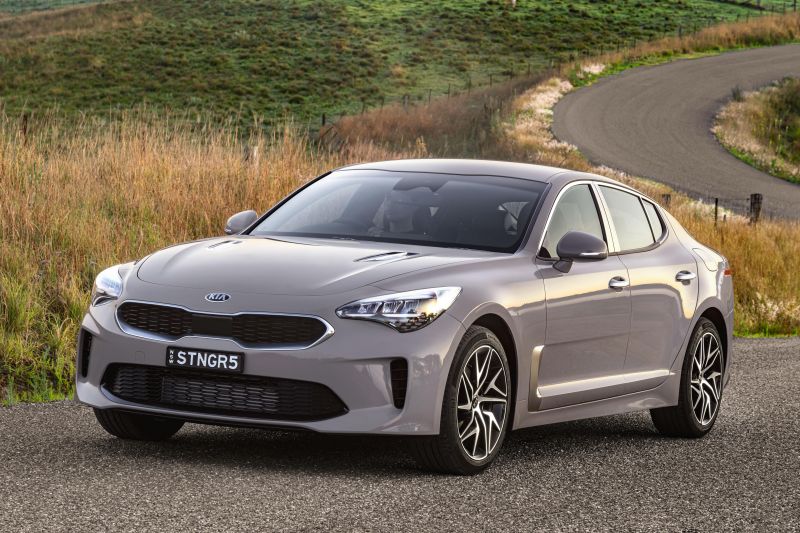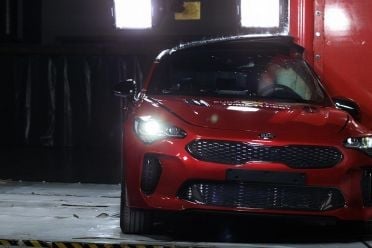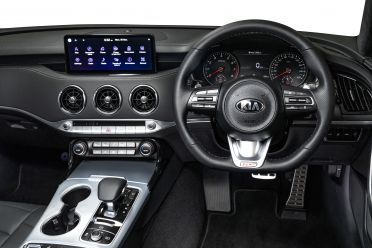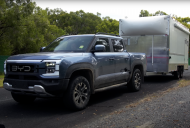The Kia Stinger has received a raft of additional, important safety technology for 2021 but, while less important, you may be pleased to hear some models also sound meaner, too.
The enhancements come at a cost, though – the cheapest Stinger only narrowly slips under the $50,000 barrier with a before on-roads price of $49,550, or $2160 higher than before.
The GT-Line has the smallest price increase at $940 and, though it adds a mechanical limited-slip differential for 2021, it loses its adaptive dampers.
The rest of the Stinger range has also seen price increases, which are detailed below.
All models now add cyclist detection and junction assist to the standard autonomous emergency braking, with the latter applying the brakes if it detects an imminent collision while turning across oncoming traffic.
The lane-keeping assist system now features road edge detection to help keep you in your lane, while lane-following assist uses the front camera to keep you centred in your lane.
The GT-Line and GT score Kia’s new Blind Spot View Monitor, as seen on the Sorento GT-Line, which displays a camera view of your blind spot in the instrument cluster. The 7.0-inch colour information screen between the gauges is unchanged.
These trim levels also get standard rear cross-traffic assist, which applies the brakes if it detects an imminent collision while reversing.
Likewise, blind-spot assist is standard on the GT-Line and GT, which applies the brakes to prevent a collision with a vehicle in another lane, as is safe-exit warning which sounds an alarm if you try to open your door into traffic coming from behind.
The twin-turbo V6-powered 330S and GT have a standard, factory-developed bi-modal exhaust with larger quad exhaust tips that’s freed an extra 2kW of power, though torque is unchanged.
The turbocharged 2.0-litre four-cylinder engine’s outputs are also unchanged, as are its exhaust outlets.
Visual changes across the range, however, consist of new wheel designs and new, full-width LED tail lights and LED headlights, which feature dynamic cornering lights in the GT-Line and GT.
LED headlights are now standard across the range, replacing last year’s halogen units in the 200S and 330S.
Also standard across the range is a new, 10.25-inch touchscreen infotainment system with Android Auto, Apple CarPlay and satellite navigation, replacing the outgoing model’s 7.0- and 8.0-inch units, which allows you to pair multiple devices via Bluetooth.
GT-Line and GT models feature colour-adjustable ambient lighting, while the steering wheel has a new metallic finish and the dashboard and doors have a different stitch pattern.
The flagship four- and six-cylinder variants also have a power tailgate that can be set to one of four opening heights in the settings menu, while 200S and 330S models ditch their 3.5-inch instrument cluster information screen for a colour 4.2-inch unit.
Kia claims the 2.0-litre is growing in popularity, even though it’s traditionally been significantly outsold by the twin-turbo V6 that’s proved fairly popular with police.
“While it is no surprise that it is the performance engine which garners the most interest and excitement, the 2.0-litre variant is a slow burner with growing interest in an increasing number of areas,” said Kia Motors Australia chief operating officer Damien Meredith.
Unfortunately, we miss out on the new, turbocharged 2.5-litre four-cylinder engine available in Korea and, soon, the US.
It produces 224kW of power and 422Nm of torque, identical outputs to the Genesis G80 2.5T. The carryover 2.0-litre, in contrast, produces 182kW of power and 353Nm of torque.
Sadly, we also miss out on the new brown leather interior available in other markets. Stinger interiors remain black except for the GT-Line and GT, which offer red leather upholstery.
The Stinger is Australia’s best-selling large car, though that comes with a caveat: just two other cars are included in that VFACTS category and one of them, the Holden Commodore, has been discontinued.
Kia has sold 1661 Stingers so far this year, outselling the Skoda Superb by almost seven-to-one. The new model is on sale now.
Pricing
- 2021 Kia Stinger 200S 2.0T: $49,550 (+$2160), $53,090 drive-away
- 2021 Kia Stinger 330S: $53,330 (+$3140), $56,890 drive-away
- 2021 Kia Stinger GT-Line 2.0T: $57,230 (+$940), $60,690 drive-away
- 2021 Kia Stinger GT: $63,260 (+$2470), $66,690 drive-away
All prices exclude on-road costs unless specified.
Engines
The 2021 Kia Stinger range comes with a choice of two engines.
Powering the Stinger 200S and GT-Line is a turbocharged 2.0-litre four-cylinder engine with 182kW of power and 353Nm of torque.
The Stinger 330S and GT use a twin-turbocharged 3.3-litre V6 with 274kW and 510Nm.
All Stingers use an eight-speed automatic transmission and rear-wheel drive.
Fuel Economy
The 2021 Kia Stinger, when equipped with the turbocharged 2.0-litre, consumes 8.8L/100km on the combined cycle while the more powerful twin-turbocharged 3.3 V6 uses 10.2L/100km.
All Stingers use 91RON regular unleaded fuel and have a 60L fuel tank.
Dimensions
The 2021 Kia Stinger measures 4830mm long, 1400mm tall and 1870mm wide with a 2905mm wheelbase.
The Stinger’s total luggage space is 406L, increasing to 1114L with the rear seats folded. Under the boot floor is a space-saver spare.
Servicing
All 2021 Kia Stinger models require servicing every 12 months or 10,000km, whichever comes first.
Kia offers seven years of capped-price servicing in addition to its seven-year, unlimited-kilometre warranty.
We’ve contacted Kia to confirm if there’ll be any changes to servicing prices for 2021.
Safety
When the Kia Stinger was tested by ANCAP in 2017, it received a rating of five stars.
That rating was based on an adult occupant protection score of 91 per cent, child occupant protection of 81 per cent, pedestrian protection of 78 per cent and safety assist of 70 per cent.
All 2021 Kia Stinger models come standard with:
- Autonomous emergency braking with forward-collision warning, cyclist detection and junction assist
- Lane-keeping assist
- Lane-following assist
- Front, front-side and curtain airbags and a driver’s knee bag
GT-Line and GT models add:
- Safe exit warning
- Blind-spot assist with blind-spot view monitor
- Rear cross-traffic assist
You can find more details and highlights on all the safety features on the official Kia Stinger page.
Standard Equipment
The base Stinger 200S comes with the following standard features:
- 10.25-inch touchscreen infotainment system with Apple CarPlay, Android Auto and satellite navigation
- DAB digital radio
- LED headlights
- Reversing camera and rear parking sensors
- Adaptive cruise control
- Keyless entry and start
- Remote start
- “Sports Premium” seat trim
- Eight-way power driver’s seat
- Rain-sensing wipers
- Paddle shifters
- Electronic parking brake
- Tilt and telescoping steering column
- 18-inch alloy wheels
- Six-speaker sound system
- Dual-zone climate control
The Stinger 330S adds the following features:
- Twin-turbocharged 3.3-litre V6
- Brembo brakes
- Mechanical limited-slip differential
- Bi-modal exhaust
Next up the price ladder is the Stinger GT-Line, which doesn’t include the 330S’s engine, exhaust and Brembo brakes, but adds:
- Front parking sensors
- Surround-view camera
- Blind-spot assist
- Rear cross-traffic assist
- Safe exit warning
- Adaptive high-beam
- Active bending lights
- Leather trim
- Heated and ventilated front seats
- Eight-way power passenger’s seat
- Panoramic sunroof
- Flat-bottom leather-wrapped steering wheel with heating
- 7.0-inch instrument cluster display
- Alloy pedals
- Head-up display
- Suede interior trim for roof, pillars and visors
- Wireless phone charging
- 15-speaker Harman/Kardon sound system
- Colour-adjustable ambient lighting
- 19-inch alloy wheels
Over the Stinger GT-Line, the Stinger GT adds:
- Twin-turbocharged 3.3-litre V6 engine
- Brembo brakes
- Adaptive dampers
- Nappa leather trim
- Electronically-adjustable tilt and telescoping steering wheel


